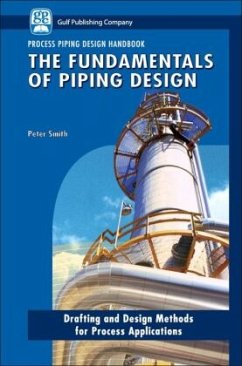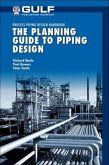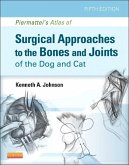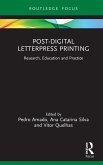Peter Smith
The Fundamentals of Piping Design
Peter Smith
The Fundamentals of Piping Design
- Gebundenes Buch
- Merkliste
- Auf die Merkliste
- Bewerten Bewerten
- Teilen
- Produkt teilen
- Produkterinnerung
- Produkterinnerung
Written for the piping engineer and designer in the field, this two-part series fills a void in piping literature, since the Rip Weaver books of the '90s were taken out of print at the advent of the Computer Aid Design (CAD) era. Technology may have changed, however the fundamentals of piping rules still apply in the digital representation of process piping systems. The Fundamentals of Piping Design is an introduction to the design of piping systems, various processes and the layout of pipe work connecting the major items of equipment for the new hire, the engineering student and the veteran engineer needing a reference. …mehr
Andere Kunden interessierten sich auch für
![Underbalanced Drilling: Limits and Extremes Underbalanced Drilling: Limits and Extremes]() Underbalanced Drilling: Limits and Extremes129,99 €
Underbalanced Drilling: Limits and Extremes129,99 €![The Planning Guide to Piping Design The Planning Guide to Piping Design]() Richard BealeThe Planning Guide to Piping Design123,99 €
Richard BealeThe Planning Guide to Piping Design123,99 €![Metal Fatigue: Effects of Small Defects and Nonmetallic Inclusions Metal Fatigue: Effects of Small Defects and Nonmetallic Inclusions]() Yukitaka MurakamiMetal Fatigue: Effects of Small Defects and Nonmetallic Inclusions218,99 €
Yukitaka MurakamiMetal Fatigue: Effects of Small Defects and Nonmetallic Inclusions218,99 €![An Atlas of Surgical Approaches to the Bones and Joints of the Dog and Cat An Atlas of Surgical Approaches to the Bones and Joints of the Dog and Cat]() Johnson, Kenneth A., MVSc, PhD, FACVS, Diplomate ACVS, Diplomate ECVAn Atlas of Surgical Approaches to the Bones and Joints of the Dog and Cat99,99 €
Johnson, Kenneth A., MVSc, PhD, FACVS, Diplomate ACVS, Diplomate ECVAn Atlas of Surgical Approaches to the Bones and Joints of the Dog and Cat99,99 €![Anatomy of the Moving Body, Second Edition Anatomy of the Moving Body, Second Edition]() Dimon, Theodore, Jr.Anatomy of the Moving Body, Second Edition29,99 €
Dimon, Theodore, Jr.Anatomy of the Moving Body, Second Edition29,99 €![The Fabrication of Louis XIV The Fabrication of Louis XIV]() Peter BurkeThe Fabrication of Louis XIV29,99 €
Peter BurkeThe Fabrication of Louis XIV29,99 €![Post-Digital Letterpress Printing Post-Digital Letterpress Printing]() Post-Digital Letterpress Printing56,99 €
Post-Digital Letterpress Printing56,99 €-
-
-
Written for the piping engineer and designer in the field, this two-part series fills a void in piping literature, since the Rip Weaver books of the '90s were taken out of print at the advent of the Computer Aid Design (CAD) era. Technology may have changed, however the fundamentals of piping rules still apply in the digital representation of process piping systems. The Fundamentals of Piping Design is an introduction to the design of piping systems, various processes and the layout of pipe work connecting the major items of equipment for the new hire, the engineering student and the veteran engineer needing a reference.
Produktdetails
- Produktdetails
- Verlag: Elsevier Science & Technology / Gulf Publishing Company
- Artikelnr. des Verlages: C2013-0-15512-2
- Englisch
- Abmessung: 233mm x 155mm x 229mm
- Gewicht: 528g
- ISBN-13: 9781933762043
- Artikelnr.: 21772083
- Herstellerkennzeichnung Die Herstellerinformationen sind derzeit nicht verfügbar.
- Verlag: Elsevier Science & Technology / Gulf Publishing Company
- Artikelnr. des Verlages: C2013-0-15512-2
- Englisch
- Abmessung: 233mm x 155mm x 229mm
- Gewicht: 528g
- ISBN-13: 9781933762043
- Artikelnr.: 21772083
- Herstellerkennzeichnung Die Herstellerinformationen sind derzeit nicht verfügbar.
List of Figures
List of Tables
Foreword
Preface
1 Piping Codes, Standards, and Specifications
1.1 Introduction
1.2 Definitions
1.3 Codes
1.3.1 American Society of Mechanical Engineers Boiler Pressure Vessel Codes
1.3.2 American Society of Mechanical Engineers B31, Codes for Pressure Piping
1.4 Standards and Specifications
1.4.1 American Society of Mechanical Engineers
1.4.2 American Petroleum Institute
1.4.3 American Society for Testing and Materials
1.4.4 American Society for Nondestructive Testing
1.4.5 American Society for Quality
1.4.6 American Welding Society
1.4.7 American Water Works Association
1.4.8 Copper Development Association
1.4.9 Compressed Gas Association
1.4.10 Canadian Standards Association
1.4.11 Expansion Joint Manufacturers Association
1.4.12 Manufacturers Standardization Society of the Valve and Fittings Industry
1.4.13 National Association of Corrosion Engineers
1.4.14 National Fire Protection Association
1.4.15 Pipe Fabrication Institute
1.4.16 Society of Automotive Engineers
2 Piping Components
2.1 Introduction to Piping Components
2.2 Pipe
2.2.1 Pipe Sizes
2.2.2 Pipe Ends
2.3 Pipe Fittings
2.3.1 Butt-Weld End Fittings
2.3.2 Socket-Weld and Threaded-End Fittings
2.3.3 Flanged Joints
2.4 Valves
2.4.1 Valve Codes and Standards
2.4.2 Classification of Operation Valves
2.4.3 Valve Classification
2.4.4 Valve Components
2.5 Bolts and Gaskets (Fasteners and Sealing Elements)
2.5.1 The Process of Joint Integrity
2.5.2 Flange Joint Components
2.5.3 The Flanged Joint System
3 Metallic Materials for Piping Components
3.1 Properties of Piping Materials
3.1.1 Chemical Properties of Metals
3.1.2 Mechanical Properties of Metals
3.1.3 Elongation and Reduction of Area
3.1.4 Physical Properties of Metals
3.2 Metallic Materials
3.3 Alloying of Steel
3.4 Types of Steel
3.4.1 Mild (Low-Carbon) Steel
3.4.2 Medium-Carbon Steel
3.4.3 High-Carbon Steel
3.4.4 High-Tensile Steel
3.4.5 Stainless Steel
3.5 Steel Heat-Treating Methods
3.5.1 Annealing
3.5.2 Normalizing
3.5.3 Hardening
3.5.4 Tempering
3.6 Nonferrous Metals in Alloying
3.7 Material Specifications
3.7.1 American Society for Testing and Materials
3.7.2 Unified Numbering System of Ferrous Metals and Alloys
4 Roles and Responsibilities
4.1 The Lead Piping Engineer
4.2 Piping Materials Engineering Group
4.2.1 Project Lead Piping Materials Engineer
4.2.2 Senior Piping Materials Engineer
4.3 Piping Design Group
4.3.1 Project Piping Area/Unit Supervisor (Squad Boss)
4.3.2 Project Piping CAD Coordinator
4.3.3 Project Piping Designers-Checkers
4.4 Piping Materials Control Group
4.4.1 Project Lead Piping Materials Controller
4.4.2 Project Piping Materials Controller
4.5 Piping Stress Engineering Group
4.5.1 Project L
List of Tables
Foreword
Preface
1 Piping Codes, Standards, and Specifications
1.1 Introduction
1.2 Definitions
1.3 Codes
1.3.1 American Society of Mechanical Engineers Boiler Pressure Vessel Codes
1.3.2 American Society of Mechanical Engineers B31, Codes for Pressure Piping
1.4 Standards and Specifications
1.4.1 American Society of Mechanical Engineers
1.4.2 American Petroleum Institute
1.4.3 American Society for Testing and Materials
1.4.4 American Society for Nondestructive Testing
1.4.5 American Society for Quality
1.4.6 American Welding Society
1.4.7 American Water Works Association
1.4.8 Copper Development Association
1.4.9 Compressed Gas Association
1.4.10 Canadian Standards Association
1.4.11 Expansion Joint Manufacturers Association
1.4.12 Manufacturers Standardization Society of the Valve and Fittings Industry
1.4.13 National Association of Corrosion Engineers
1.4.14 National Fire Protection Association
1.4.15 Pipe Fabrication Institute
1.4.16 Society of Automotive Engineers
2 Piping Components
2.1 Introduction to Piping Components
2.2 Pipe
2.2.1 Pipe Sizes
2.2.2 Pipe Ends
2.3 Pipe Fittings
2.3.1 Butt-Weld End Fittings
2.3.2 Socket-Weld and Threaded-End Fittings
2.3.3 Flanged Joints
2.4 Valves
2.4.1 Valve Codes and Standards
2.4.2 Classification of Operation Valves
2.4.3 Valve Classification
2.4.4 Valve Components
2.5 Bolts and Gaskets (Fasteners and Sealing Elements)
2.5.1 The Process of Joint Integrity
2.5.2 Flange Joint Components
2.5.3 The Flanged Joint System
3 Metallic Materials for Piping Components
3.1 Properties of Piping Materials
3.1.1 Chemical Properties of Metals
3.1.2 Mechanical Properties of Metals
3.1.3 Elongation and Reduction of Area
3.1.4 Physical Properties of Metals
3.2 Metallic Materials
3.3 Alloying of Steel
3.4 Types of Steel
3.4.1 Mild (Low-Carbon) Steel
3.4.2 Medium-Carbon Steel
3.4.3 High-Carbon Steel
3.4.4 High-Tensile Steel
3.4.5 Stainless Steel
3.5 Steel Heat-Treating Methods
3.5.1 Annealing
3.5.2 Normalizing
3.5.3 Hardening
3.5.4 Tempering
3.6 Nonferrous Metals in Alloying
3.7 Material Specifications
3.7.1 American Society for Testing and Materials
3.7.2 Unified Numbering System of Ferrous Metals and Alloys
4 Roles and Responsibilities
4.1 The Lead Piping Engineer
4.2 Piping Materials Engineering Group
4.2.1 Project Lead Piping Materials Engineer
4.2.2 Senior Piping Materials Engineer
4.3 Piping Design Group
4.3.1 Project Piping Area/Unit Supervisor (Squad Boss)
4.3.2 Project Piping CAD Coordinator
4.3.3 Project Piping Designers-Checkers
4.4 Piping Materials Control Group
4.4.1 Project Lead Piping Materials Controller
4.4.2 Project Piping Materials Controller
4.5 Piping Stress Engineering Group
4.5.1 Project L
List of Figures
List of Tables
Foreword
Preface
1 Piping Codes, Standards, and Specifications
1.1 Introduction
1.2 Definitions
1.3 Codes
1.3.1 American Society of Mechanical Engineers Boiler Pressure Vessel Codes
1.3.2 American Society of Mechanical Engineers B31, Codes for Pressure Piping
1.4 Standards and Specifications
1.4.1 American Society of Mechanical Engineers
1.4.2 American Petroleum Institute
1.4.3 American Society for Testing and Materials
1.4.4 American Society for Nondestructive Testing
1.4.5 American Society for Quality
1.4.6 American Welding Society
1.4.7 American Water Works Association
1.4.8 Copper Development Association
1.4.9 Compressed Gas Association
1.4.10 Canadian Standards Association
1.4.11 Expansion Joint Manufacturers Association
1.4.12 Manufacturers Standardization Society of the Valve and Fittings Industry
1.4.13 National Association of Corrosion Engineers
1.4.14 National Fire Protection Association
1.4.15 Pipe Fabrication Institute
1.4.16 Society of Automotive Engineers
2 Piping Components
2.1 Introduction to Piping Components
2.2 Pipe
2.2.1 Pipe Sizes
2.2.2 Pipe Ends
2.3 Pipe Fittings
2.3.1 Butt-Weld End Fittings
2.3.2 Socket-Weld and Threaded-End Fittings
2.3.3 Flanged Joints
2.4 Valves
2.4.1 Valve Codes and Standards
2.4.2 Classification of Operation Valves
2.4.3 Valve Classification
2.4.4 Valve Components
2.5 Bolts and Gaskets (Fasteners and Sealing Elements)
2.5.1 The Process of Joint Integrity
2.5.2 Flange Joint Components
2.5.3 The Flanged Joint System
3 Metallic Materials for Piping Components
3.1 Properties of Piping Materials
3.1.1 Chemical Properties of Metals
3.1.2 Mechanical Properties of Metals
3.1.3 Elongation and Reduction of Area
3.1.4 Physical Properties of Metals
3.2 Metallic Materials
3.3 Alloying of Steel
3.4 Types of Steel
3.4.1 Mild (Low-Carbon) Steel
3.4.2 Medium-Carbon Steel
3.4.3 High-Carbon Steel
3.4.4 High-Tensile Steel
3.4.5 Stainless Steel
3.5 Steel Heat-Treating Methods
3.5.1 Annealing
3.5.2 Normalizing
3.5.3 Hardening
3.5.4 Tempering
3.6 Nonferrous Metals in Alloying
3.7 Material Specifications
3.7.1 American Society for Testing and Materials
3.7.2 Unified Numbering System of Ferrous Metals and Alloys
4 Roles and Responsibilities
4.1 The Lead Piping Engineer
4.2 Piping Materials Engineering Group
4.2.1 Project Lead Piping Materials Engineer
4.2.2 Senior Piping Materials Engineer
4.3 Piping Design Group
4.3.1 Project Piping Area/Unit Supervisor (Squad Boss)
4.3.2 Project Piping CAD Coordinator
4.3.3 Project Piping Designers-Checkers
4.4 Piping Materials Control Group
4.4.1 Project Lead Piping Materials Controller
4.4.2 Project Piping Materials Controller
4.5 Piping Stress Engineering Group
4.5.1 Project L
List of Tables
Foreword
Preface
1 Piping Codes, Standards, and Specifications
1.1 Introduction
1.2 Definitions
1.3 Codes
1.3.1 American Society of Mechanical Engineers Boiler Pressure Vessel Codes
1.3.2 American Society of Mechanical Engineers B31, Codes for Pressure Piping
1.4 Standards and Specifications
1.4.1 American Society of Mechanical Engineers
1.4.2 American Petroleum Institute
1.4.3 American Society for Testing and Materials
1.4.4 American Society for Nondestructive Testing
1.4.5 American Society for Quality
1.4.6 American Welding Society
1.4.7 American Water Works Association
1.4.8 Copper Development Association
1.4.9 Compressed Gas Association
1.4.10 Canadian Standards Association
1.4.11 Expansion Joint Manufacturers Association
1.4.12 Manufacturers Standardization Society of the Valve and Fittings Industry
1.4.13 National Association of Corrosion Engineers
1.4.14 National Fire Protection Association
1.4.15 Pipe Fabrication Institute
1.4.16 Society of Automotive Engineers
2 Piping Components
2.1 Introduction to Piping Components
2.2 Pipe
2.2.1 Pipe Sizes
2.2.2 Pipe Ends
2.3 Pipe Fittings
2.3.1 Butt-Weld End Fittings
2.3.2 Socket-Weld and Threaded-End Fittings
2.3.3 Flanged Joints
2.4 Valves
2.4.1 Valve Codes and Standards
2.4.2 Classification of Operation Valves
2.4.3 Valve Classification
2.4.4 Valve Components
2.5 Bolts and Gaskets (Fasteners and Sealing Elements)
2.5.1 The Process of Joint Integrity
2.5.2 Flange Joint Components
2.5.3 The Flanged Joint System
3 Metallic Materials for Piping Components
3.1 Properties of Piping Materials
3.1.1 Chemical Properties of Metals
3.1.2 Mechanical Properties of Metals
3.1.3 Elongation and Reduction of Area
3.1.4 Physical Properties of Metals
3.2 Metallic Materials
3.3 Alloying of Steel
3.4 Types of Steel
3.4.1 Mild (Low-Carbon) Steel
3.4.2 Medium-Carbon Steel
3.4.3 High-Carbon Steel
3.4.4 High-Tensile Steel
3.4.5 Stainless Steel
3.5 Steel Heat-Treating Methods
3.5.1 Annealing
3.5.2 Normalizing
3.5.3 Hardening
3.5.4 Tempering
3.6 Nonferrous Metals in Alloying
3.7 Material Specifications
3.7.1 American Society for Testing and Materials
3.7.2 Unified Numbering System of Ferrous Metals and Alloys
4 Roles and Responsibilities
4.1 The Lead Piping Engineer
4.2 Piping Materials Engineering Group
4.2.1 Project Lead Piping Materials Engineer
4.2.2 Senior Piping Materials Engineer
4.3 Piping Design Group
4.3.1 Project Piping Area/Unit Supervisor (Squad Boss)
4.3.2 Project Piping CAD Coordinator
4.3.3 Project Piping Designers-Checkers
4.4 Piping Materials Control Group
4.4.1 Project Lead Piping Materials Controller
4.4.2 Project Piping Materials Controller
4.5 Piping Stress Engineering Group
4.5.1 Project L








